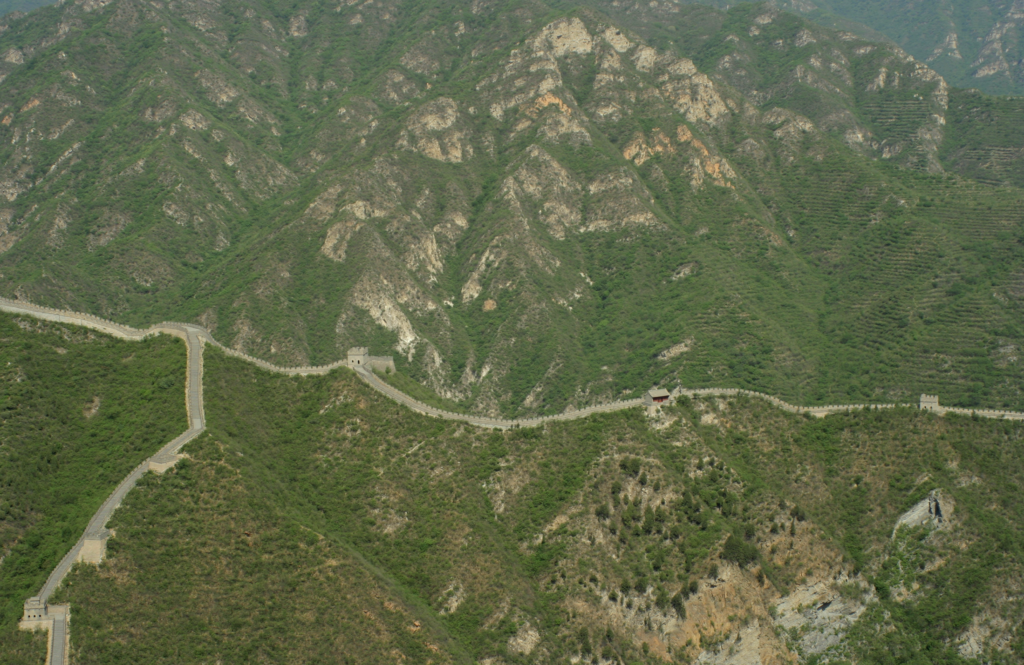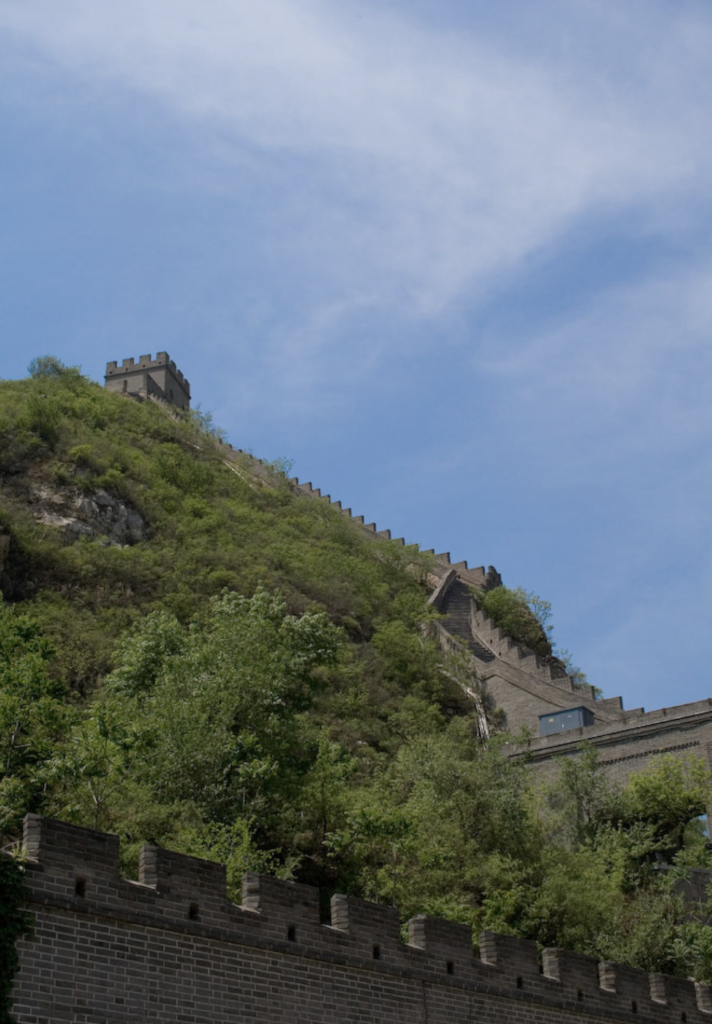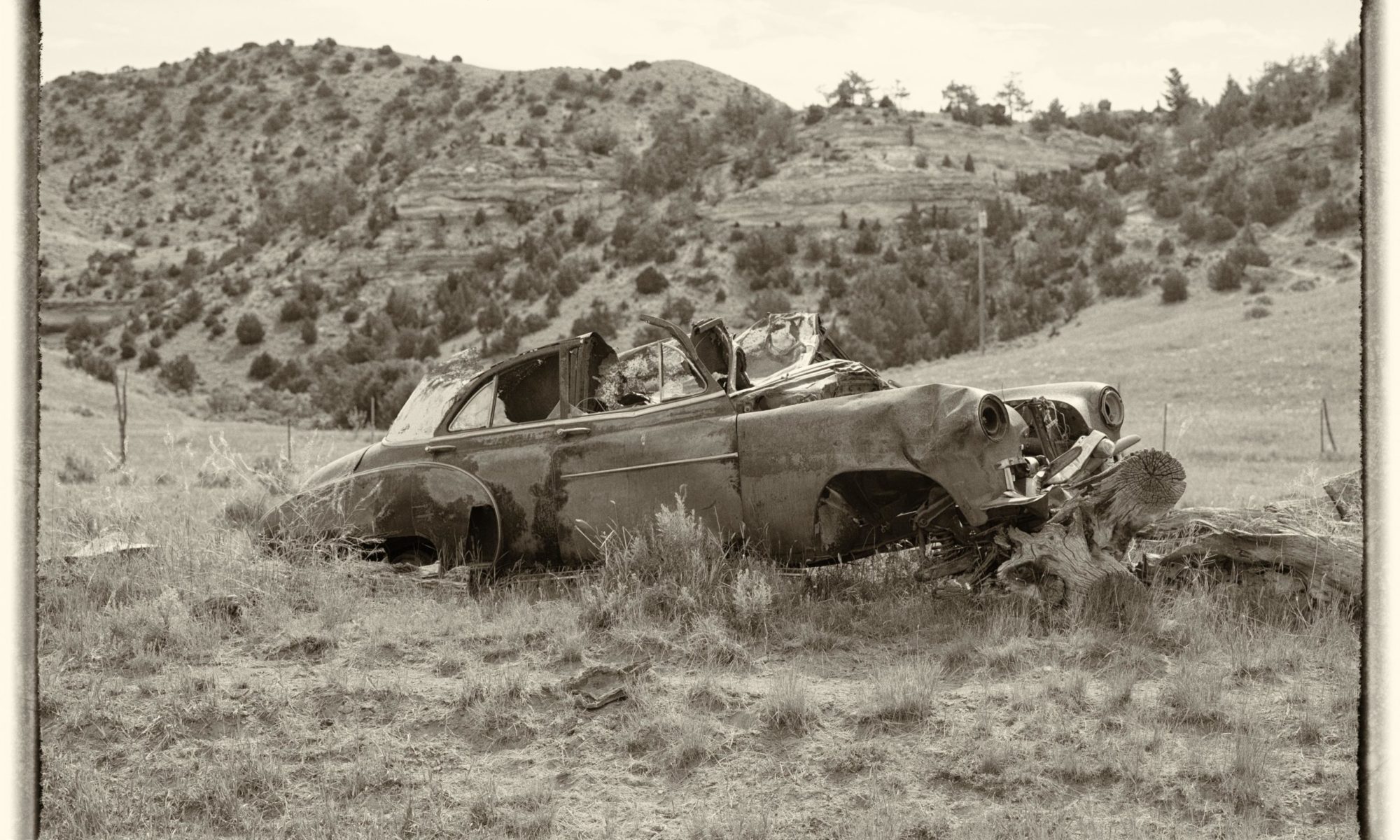Looking out the plane window I saw the shrouded city of ChongQing getting smaller and smaller. I said a quiet “goodbye” to the billions of people who called the city home. We had met new people, experienced life in the Mountain City and witnessed just a fraction of their culture. I hoped I would never forget the sights, sounds, tastes, and smells that were imbedded in my mind.
Arrangements had been made for us to stay at the ELIC (English Language Institute China) headquarters in Beijing. We were picked up at the airport by a driver the organization used on a regular basis. The accommodations were very nice. A balcony overlooked a courtyard with pretty flowers, a gazebo with the traditional architecturally curved roof, and a group of waving school children who were curious about the Americans. We order Papa John’s pizza for our evening meal, and they delivered! I slept well that night. There were no opened windows in our room, no sounds of jackhammers and people working through the night, and no bright lights.
Our driver picked us up the next morning. Our first stop of the day was Subway where we got sandwiches and drinks for a picnic lunch. On our way to the Great Wall, we visited the Ming Tombs, built from 1409-1644, which contain the mausoleums of thirteen emperors of the Ming Dynasty. The palace and tombs were quite impressive.
From there we went to a section of the Great Wall that is less commercialized. It was hard to fathom that for centuries, portions of the wall were built, rebuilt, and extended many times by China’s emperors to protect their territory from invaders from the North. The Great Wall is aptly named. It twists over mountains, plateaus, deserts, and plains for 13,170 miles. We climbed sections of steps to the top of the wall. The scene was breathtaking! Unique mountains thick with trees seemed to flow to the ends of the earth. Rocky jagged cliffs rose above the ocean of green like spikes along the back of a huge sleeping dragon ready to awaken and take flight from its secret lair.
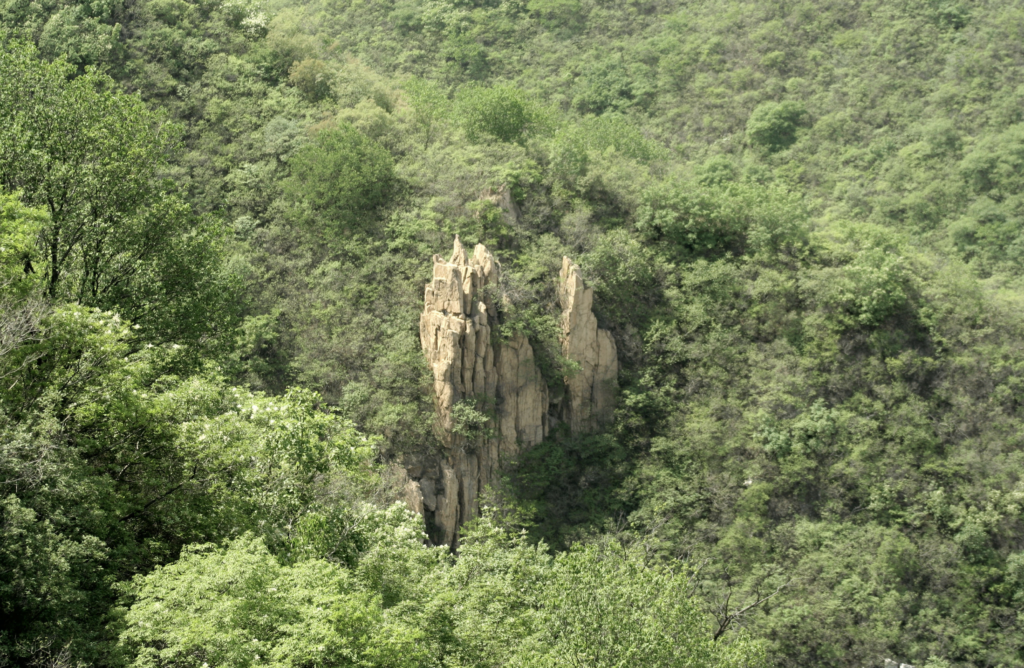
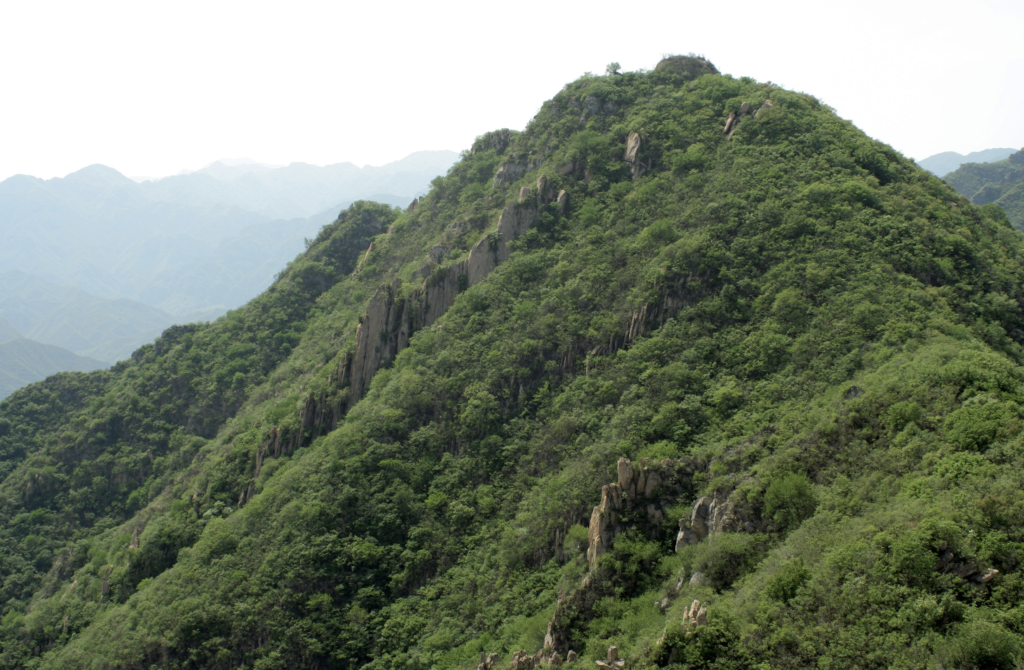
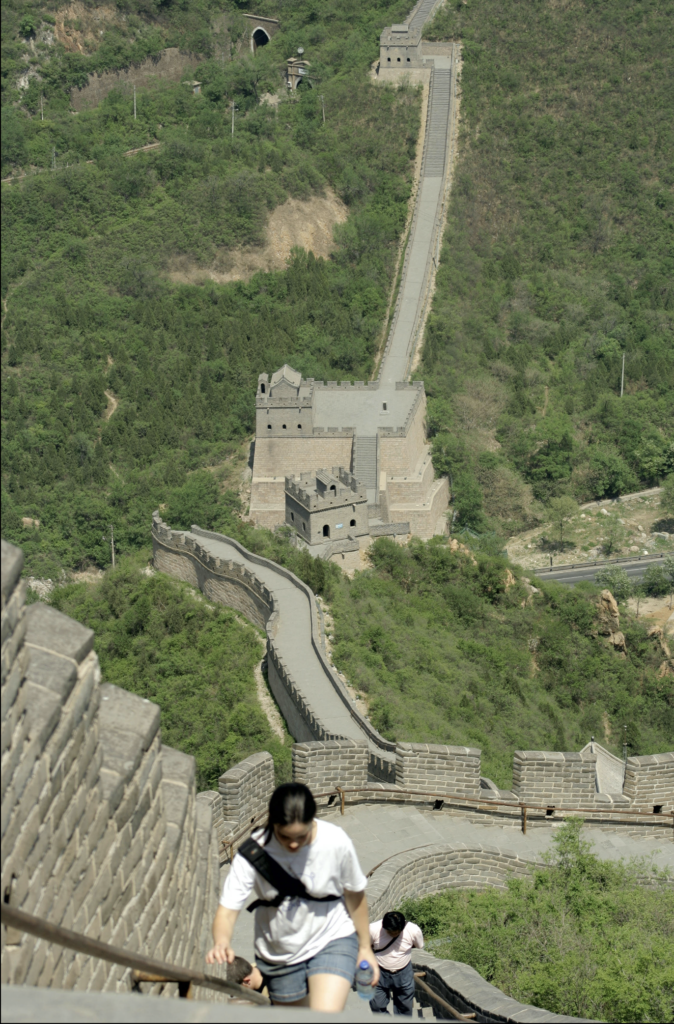
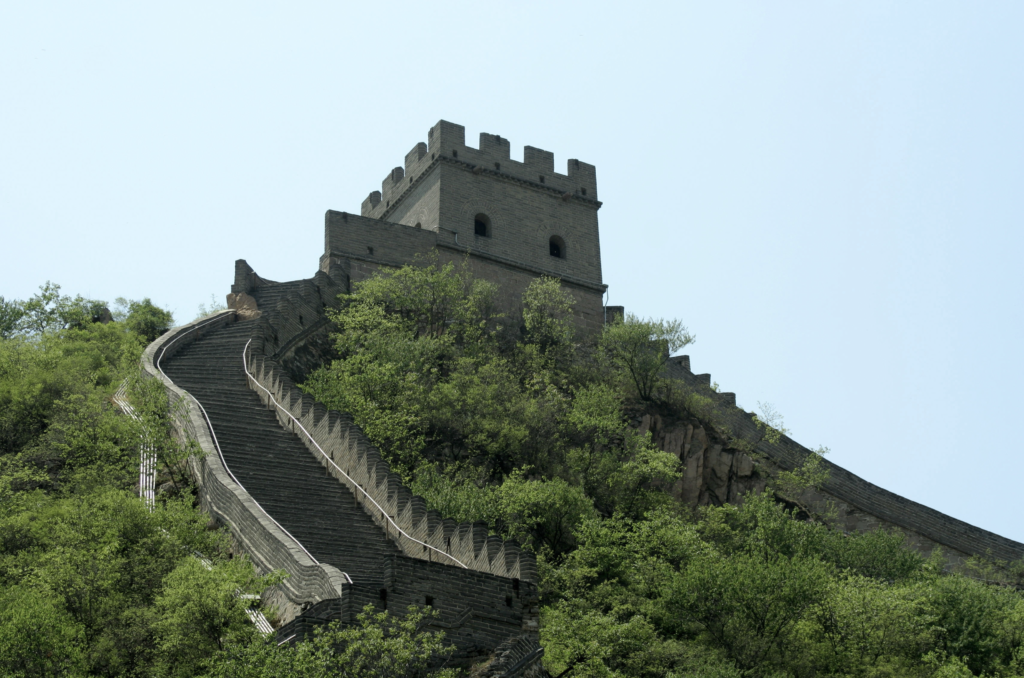
The width of the wall averages from 13-16 feet wide, but the widest section is about 55 feet. There was ample room for weapons and soldiers to move strategically along the top of the walls to defend against enemy attacks. The walls were constructed of stone, earth, brick, lime, and wood. For a time, mortar for the bricks were made with sticky rice mixed with lime. As many as 400,000 men lost their lives building the wall, many of whose bones remain buried within.
After all the walking we did in ChongQing, we were better prepared for the steep uneven steps. Along the wall were towers of different sizes at various places. Looking across the landscape, the wall seemed to go on forever as it wound up and down and around while terra cotta soldiers stood guard.
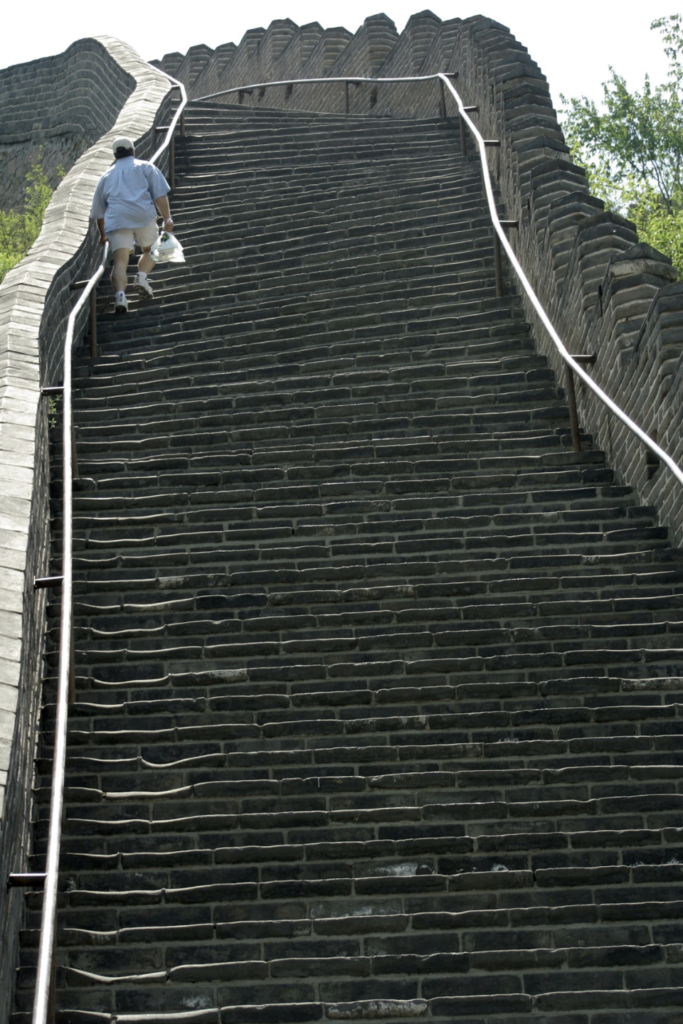
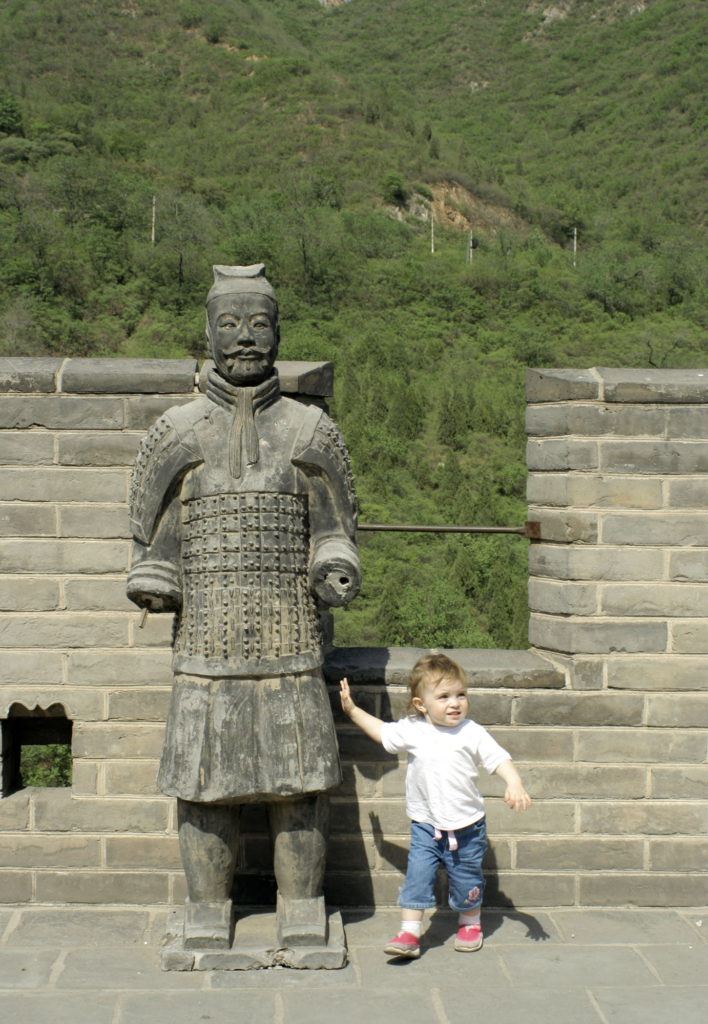
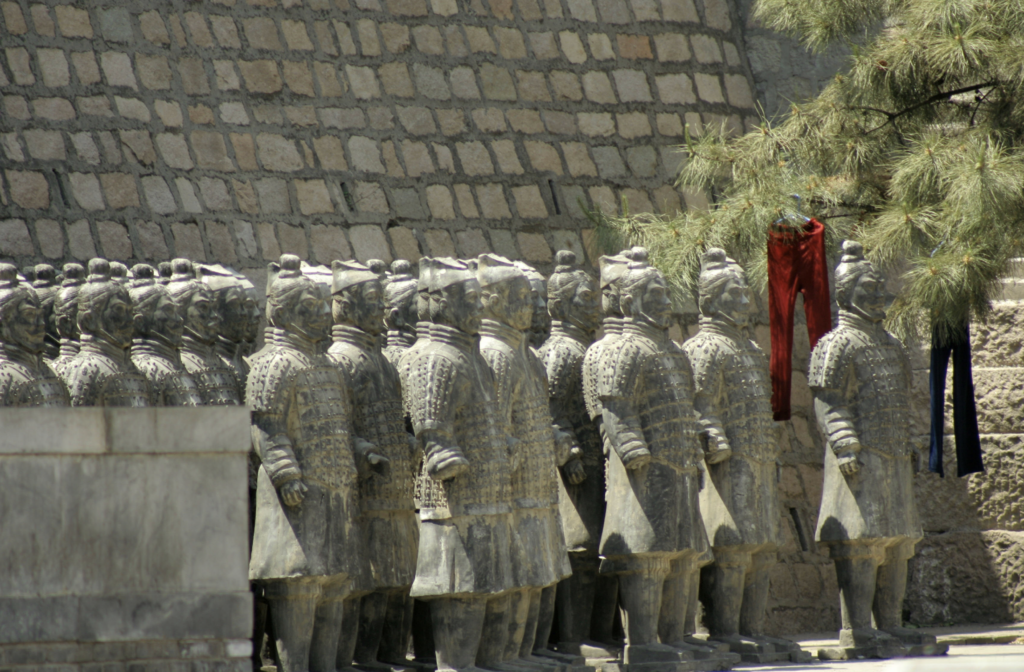
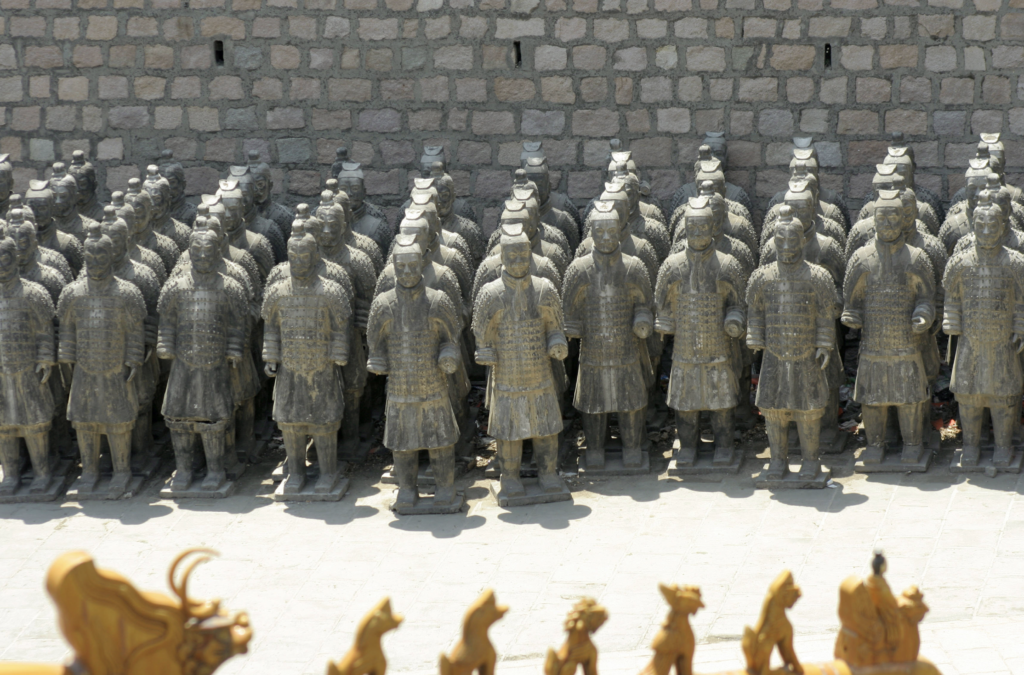
As we traveled back to the house where we were staying, we noticed a lot of construction going on. Facades were built and placed in front of dilapidated apartments and buildings as a means to cover the unsightly scenes. New bridges, street work, updated signs, and construction was underway in preparation for the Olympics and the influx of foreigners into the city of Beijing. There were more bicycles than in ChongQing and longer buses ran through Beijing’s streets. It was quite a difference from the chaotic streets of ChongQing where six lanes of traffic moving in all directions tangle through a four lane road.
Soon our time in China came to an end. We had a few more unforeseen travel adventures before we pulled into our driveway at home. It had been a memorable once-in-a-lifetime trip, one of which still stirs my memories from time to time.
